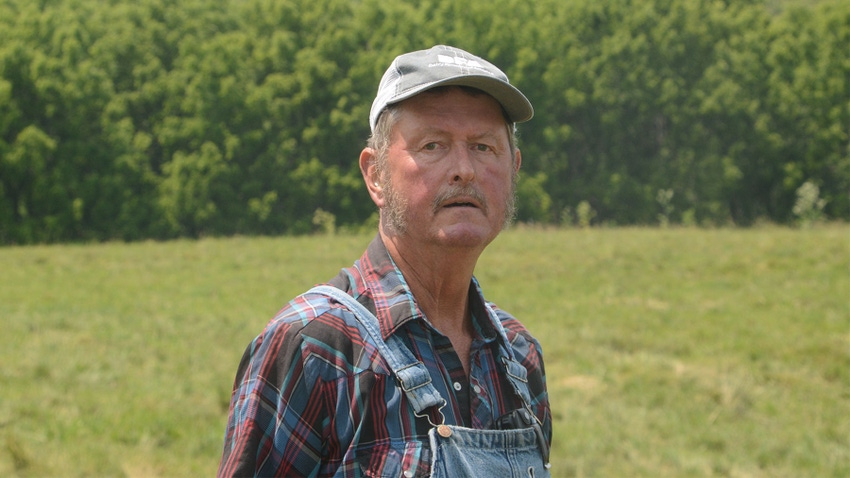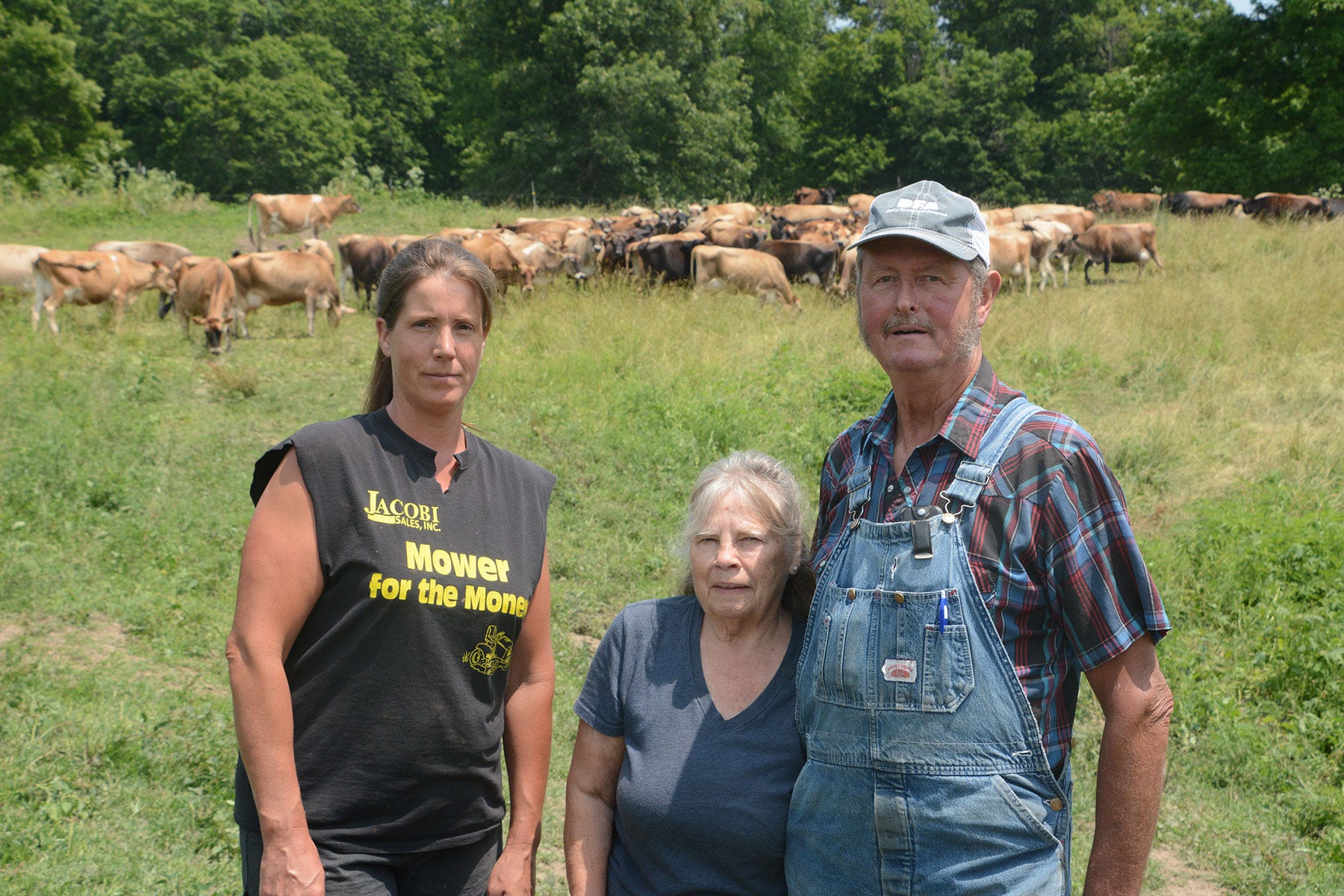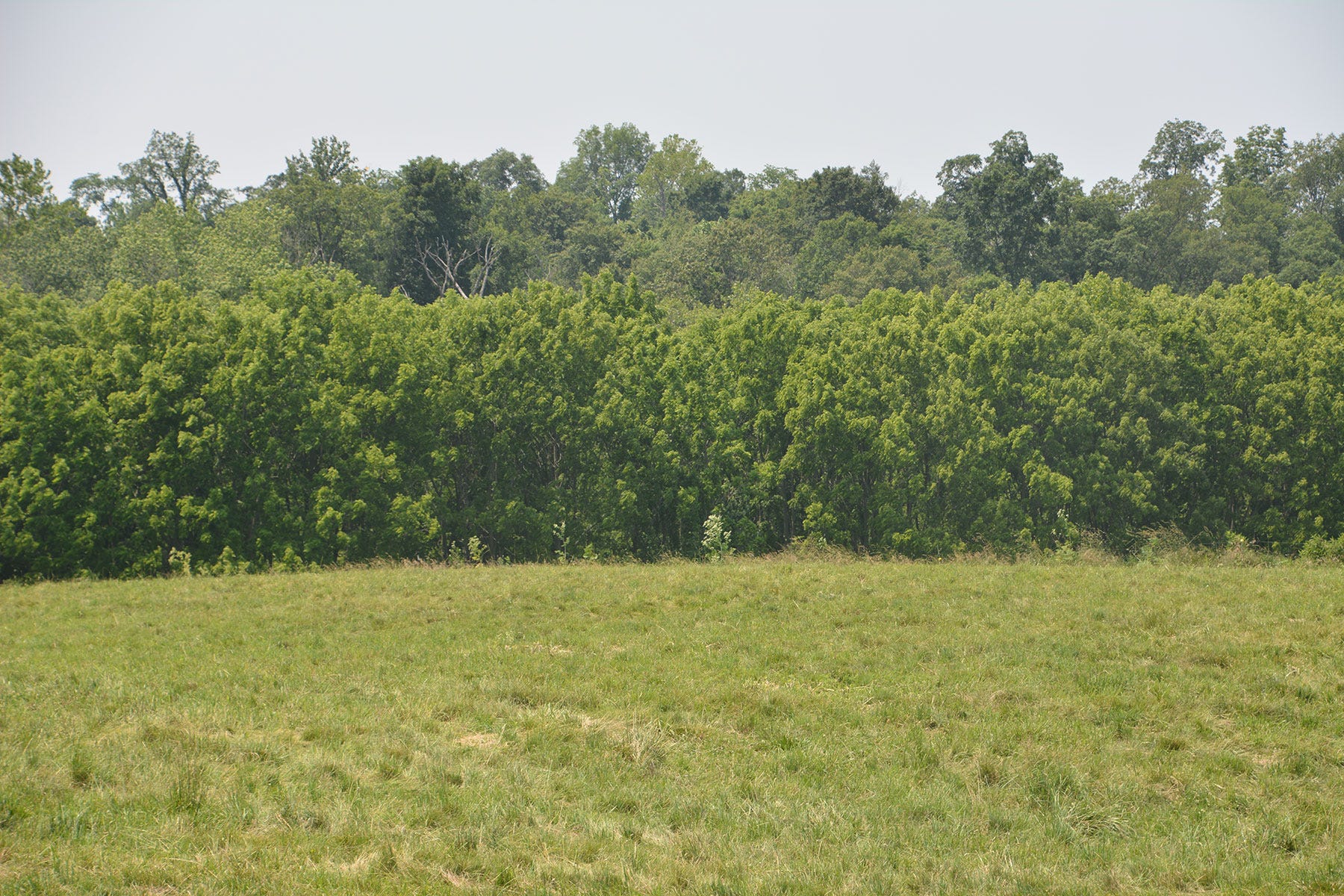
Mike Ponsford inherited a conservation ethic from his father. He’s passing it on to the next generations. Today, he also spreads the message by leading the Washington County Soil and Water Conservation District as chairman.
His efforts earned Ponsford, Salem, Ind., recognition as the 2023 Supervisor of the Year within the Indiana Association of Soil and Water Conservation Districts. This award is sponsored by Indiana Prairie Farmer.
Yet the last thing on Ponsford’s mind was being recognized. Instead, he sees conserving resources as the natural thing to do. His rolling land is nestled next to the Blue River. Most of it is best suited for pasture and hay, and he uses it for their dairy herd, and for a beef herd at another location.
Living conservation
“We first no-tilled in 1973, and we’ve been 100% no-till for at least 25 years,” Ponsford says. “A good share of our corn is either for silage or grain for cows.”
Except on corn ground harvested late, Ponsford uses cover crops — primarily wheat, crimson closer and annual ryegrass.
“We graze cover crops, and we often harvest wheatlage in the spring,” he says. “Cover crops work especially well when you have livestock.”
Rotational grazing
You won’t often find the dairy herd cooped up in the barn. Rotational grazing helps Ponsford and his wife, Judy — along with their daughter, Sarah, their partner in the operation — make efficient use of forage. While they have some acres of fescue, they prefer keeping fields in more productive grasses.
“We will move cows using temporary fencing twice a day or more,” Ponsford explains. Currently, their dairy herd consists of about 80 Jersey cows. To make sure they have enough summer pasture, he also sows a sorghum-sudangrass forage in late spring.

HARVESTING FORAGE: Mike and Judy Ponsford and daughter Sarah graze dairy cows on pasture, implementing rotational grazing to use forages as efficiently as possible.
Over the years, Ponsford laid water lines to get water to key areas. That makes it simpler to make sure cows have water.
“You need to have water available all the time if you can,” he says. “It’s an important part of making rotational grazing work.”
Tree planting
Timber has always been valued on the farm, Ponsford notes. He is a firm believer in timber stand improvement. Today, he also fights invasive species. Tree of heaven and multiflora rose are two he battles frequently.
Around 2000, Ponsford decided to provide more protection for some river bottoms, even though it was good farmland when it didn’t flood. He inquired about putting it in a program for tree planting with Jim Blank, then the local district conservationist.
With Blank’s guidance and help from The Nature Conservancy, represented then by Cassie Hauswald, Ponsford was able to establish the trees through the Conservation Reserve Program and provide more protection for the land. Today, that planting, nearly 20 acres, is a vibrant woods. Now, he works with Ruth Hackman, current local district conservationist, when he needs assistance.

LIVING TESTAMENT: These trees managed as timber are on land that raised good crops but was in an environmentally sensitive area along the Blue River.
Supporting the SWCD
“The district conservationist suggested I come to SWCD meetings,” Ponsford recalls. “I checked a box and became an associate supervisor. That’s how I got started with the SWCD.”
It didn’t take Ponsford long to see value in promoting the conservation ethic to others. He became a full-time supervisor and has served as chairman for the past six years.
“The most satisfying thing is the growth we’ve seen in the district over the past decade,” Ponsford says. “There have been two watershed projects recently; one is the South Fork Blue River project, and the other is the Mill Creek-Blue River watershed project. We cooperated with other counties. As a result, we’re seeing conservation go on the ground. That’s really rewarding. It makes it all seem worthwhile.”
“Who, me? No way!”
Mike Ponsford received the Supervisor of the Year award at the annual Indiana Association of Soil and Water Conservation Districts conference. It’s one of only a couple awards kept secret until the name is announced. I know. I was entrusted to read the description of the winner’s accomplishments and present the award once he or she arrived on stage.
So, I read the accomplishments in front of 500 people. I called Mike Ponsford’s name — and nothing. No one stood up!
“I was there, at our table in the back,” Ponsford told me later. “You read those things, but it didn’t sink in you could be talking about me. I never figured on getting recognized for doing the right things.
“All of a sudden, everybody at the table is looking at me. Somebody says, ‘Get up there, Mike. Tom doesn’t think you’re here.’
“Get up there for what?” I asked.
“You’re Supervisor of the Year, buddy.”
During a visit this summer, Mike added, “I apologize for letting you hang there, Tom. By the time it soaked in, I was so shell-shocked, I didn’t know what to do. The people who nominated me and my wife all kept it a secret. I couldn’t believe it.”
Believe it, Mike. And it is well-deserved. Many acres in Washington County and surrounding counties — both your land and other land — are better off thanks to what you do.
About the Author(s)
You May Also Like




